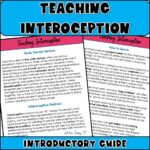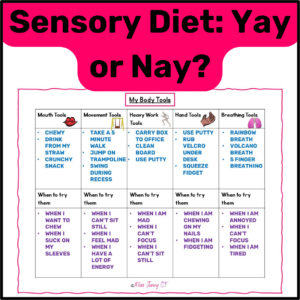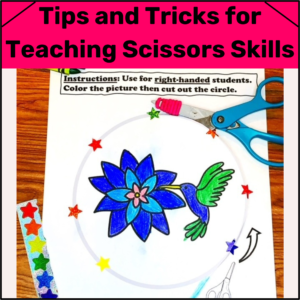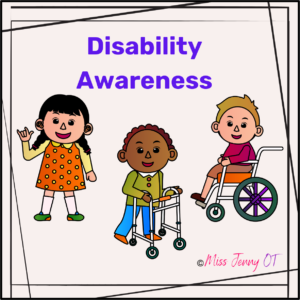Hey everyone! Thanks for checking out my blog.
I am an occupational therapist (OT). I graduated from San Jose State University in 1992, with a Bachelor’s degree in OT. I started my career working in a hospital and was able to experience all the different units and types of patients you can imagine there. After 13 years there, I moved on to working solely with kids. Since then, I have worked in school systems and private clinics. Currently, I live and work in Oregon. I was lucky to find a great non-profit outpatient pediatric clinic to work in.
The past three years working in Oregon, my interest in self-regulation and interoception has grown. I found that a lot of the kids who were referred to me had heard about all the typical programs (Zones of Regulation and How Does Your Engine Run?) in school, but they were not applying what they had learned. As I was teaching them in the clinic, and trying to figure out how to get them to use the strategies I was teaching them, I heard about Kelly Mahler, OTD, OTR/L, and the research she was doing into something called interoception.
Intero-what? That was my first thought. As an OT, I was familiar with the 5 senses that we all learn about, plus the 2 “hidden” senses that most lay people don’t know about (vestibular, which pertains to movement, and proprioception, which pertains to pressure sense and awareness of where you are in space, to put it in simple terms). According to what I learned, we also have what is known as the “8th sense”-interoception.
Once I started teaching the kids more about interoception, we made so much more progress with them learning how to regulate their emotions. I now consider this to be the missing link for most of the kids that I treat.
I will be talking more about interoception in other posts. In the meantime, check out Kelly’s website for more information. https://www.kelly-mahler.com/what-is-interoception/
If you would like to start working on interoception and increasing your child’s awareness of how their body sensations are linked to emotions, please check out my TpT store linked above.
For specific suggestions, consider the following Boom card deck (https://www.teacherspayteachers.com/Product/Interoception-Activities-Boom-cards-5728767). Boom cards are self-correcting task cards, which are hosted on the Boom learning website. Anyone can get a free account to then purchase “decks” to use. In addition to this deck, there are many others in my store that work on self-regulation, including fun escape rooms like this one: https://www.teacherspayteachers.com/Product/Social-Emotional-Regulation-Escape-Room-Boom-Cards-5654382.
If you prefer printables, check out the following products: https://www.teacherspayteachers.com/Product/Interoception-Activity-Booklet-5706475
https://www.teacherspayteachers.com/Product/Interoception-workbook-Whole-Body-Activities-5741001
Each of these interactive products have images to color and will allow students to begin exploring their emotions. These resources can also be used during distance learning. I recommend pre-teaching the concepts, and then during remote learning sessions, share your screen and pull up the resource. Using the annotation function, kids can type their answers and even do some coloring. Alternatively, you can use the digital overlay feature, which is a new option for TpT. With this tool, you can go in and add comments and text boxes (I have added some text boxes already for you), then assign the activity to your students in Google Classroom. If you don’t already use Google Classroom, once you choose the digital overlay option, you will automatically go to it. Feel free to reach out if you have any questions on how to use these resources through digital platforms. Virtual instruction is hard enough for teachers; I don’t want to add more stress!
Stay tuned for my next blog post, where I will talk more about how I would begin teaching interoception to students. In the meantime, grab your free guide to teaching interoception by clicking the image below.








